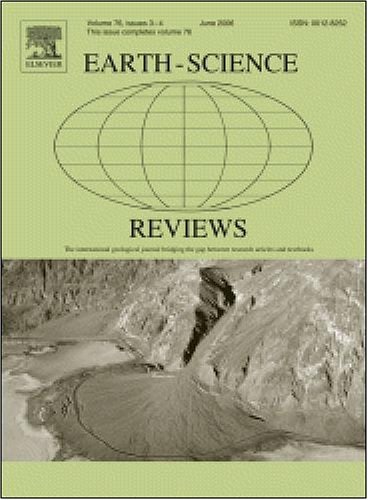基于人工智能的野火燃料测绘方法综述
IF 10
1区 地球科学
Q1 GEOSCIENCES, MULTIDISCIPLINARY
引用次数: 0
摘要
了解火灾行为是野火风险评估和管理的关键一步。准确和接近实时地了解燃料的时空特征对于分析火灾前风险缓解和管理主动火灾应急反应至关重要。利用遥感与人工智能技术相结合的地理空间建模和土地覆盖制图可以在区域尺度上提供高精度和高分辨率的燃料信息,最近大量的文献工作证明了这一点,这些文献在公开文献中越来越多地出现。本文全面综述了野火燃料测绘的最新进展,重点介绍了野火燃料模型、燃料测绘方法、遥感数据源、现有数据集/参考地图以及适用的人工智能技术的研究前沿。主要研究结果突出了全球范围内越来越多的关于火灾燃料测绘的研究,其中相当多的重点是多光谱图像和随机森林分类器,因为它在有限数据下的有效性。这些研究大多集中在相对有限的地理尺度上,涵盖少量种类的燃料,因此在区域和国家尺度的制图方面留下了空白。此外,本综述着重于确定野火燃料测绘的主要挑战和可行的解决方案,因为它们涉及(i)地面真实数据稀缺,(ii)绘制下层植被,(iii)时间延迟,以及(iv)缺乏不确定性感知模型。最后,本文确定了潜在的人工智能驱动的解决方案,这些解决方案有望在燃料映射方面取得重大飞跃,并讨论了基于人工智能的燃料映射应用的最新发展和潜在的未来趋势。本文章由计算机程序翻译,如有差异,请以英文原文为准。
Wildfire Fuels Mapping through Artificial Intelligence-based Methods: A Review
Understanding fire behavior is a crucial step in wildfire risk assessment and management. Accurate and near real-time knowledge of the spatio-temporal characteristics of fuels is critical for analyzing pre-fire risk mitigation and managing active-fire emergency response. Geospatial modeling and land cover mapping using remote sensing combined with artificial intelligence techniques can provide fuel information at regional scales with high accuracy and resolution, as evidenced by the extensive recent work in the literature that appeared with increasing volume in the open literature. This paper provides a comprehensive survey of the state-of-the-art in wildfire fuel mapping, focusing on the research frontier of fire fuel models, fuel mapping methods, remote sensing data sources, existing datasets/reference maps, and applicable artificial intelligence techniques. The main findings highlight the increasing research on fire fuel mapping worldwide, with a considerable emphasis on multispectral imagery and the Random Forest classifier for its efficacy with limited data. The majority of these studies concentrate on relatively limited geographical scales spanning a small variety of fuel types, thus leaving a gap in regional and national-scale mapping. Further, this review focuses on identifying the major challenges in wildfire fuel mapping and viable solutions as they relate to (i) ground truth data scarcity, (ii) mapping understory vegetation, (iii) temporal latency, and (iv) lack of uncertainty-aware models. Lastly, this paper identifies potential AI-driven solutions that promise a significant leap in fuel mapping and discusses the latest developments and potential future trends in AI-based fuel mapping applications.
求助全文
通过发布文献求助,成功后即可免费获取论文全文。
去求助
来源期刊

Earth-Science Reviews
地学-地球科学综合
CiteScore
21.70
自引率
5.80%
发文量
294
审稿时长
15.1 weeks
期刊介绍:
Covering a much wider field than the usual specialist journals, Earth Science Reviews publishes review articles dealing with all aspects of Earth Sciences, and is an important vehicle for allowing readers to see their particular interest related to the Earth Sciences as a whole.
 求助内容:
求助内容: 应助结果提醒方式:
应助结果提醒方式:


